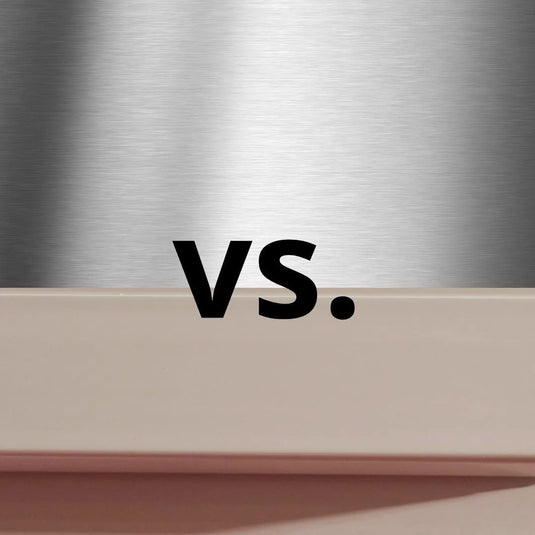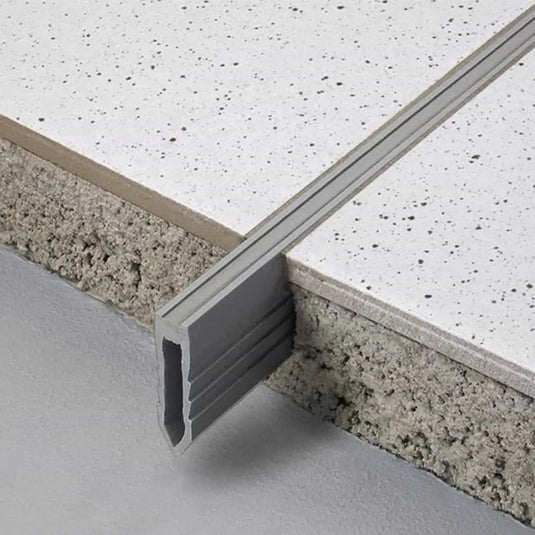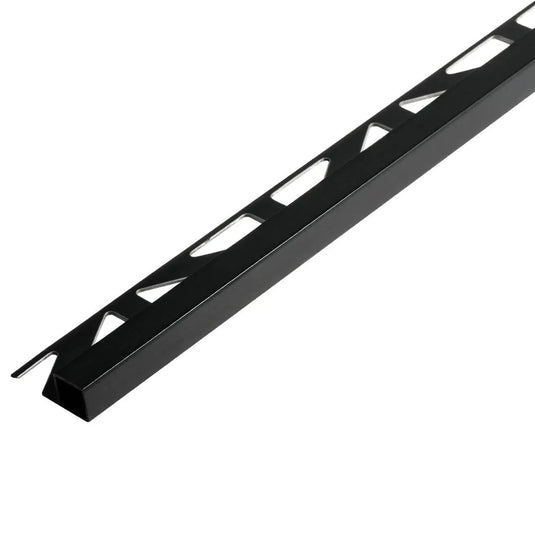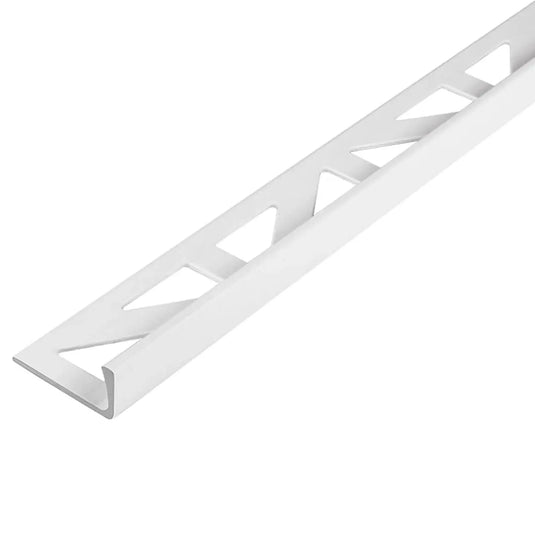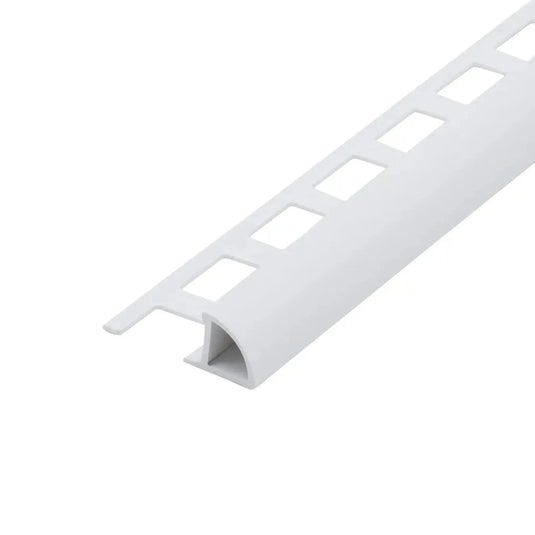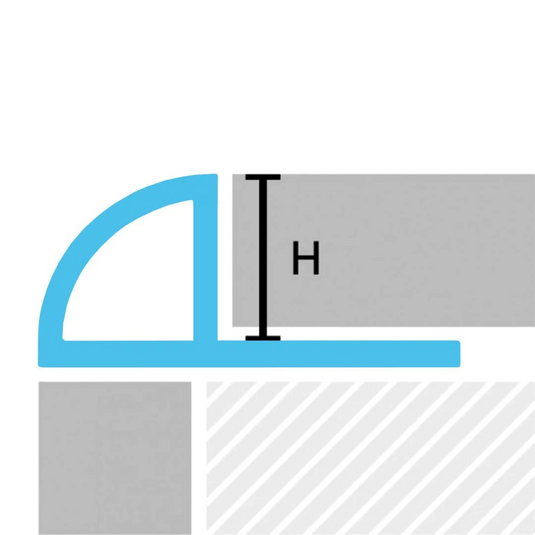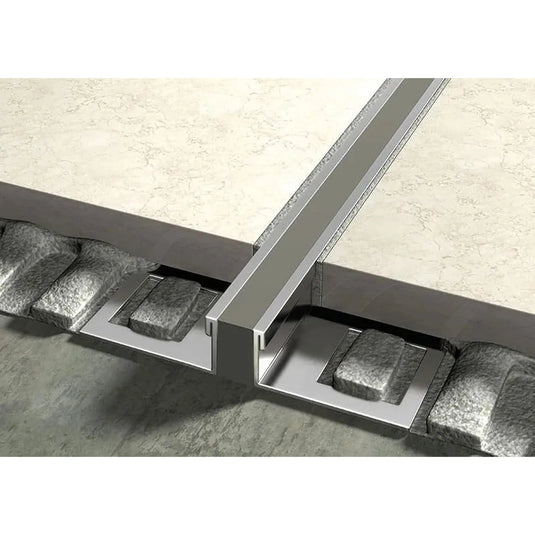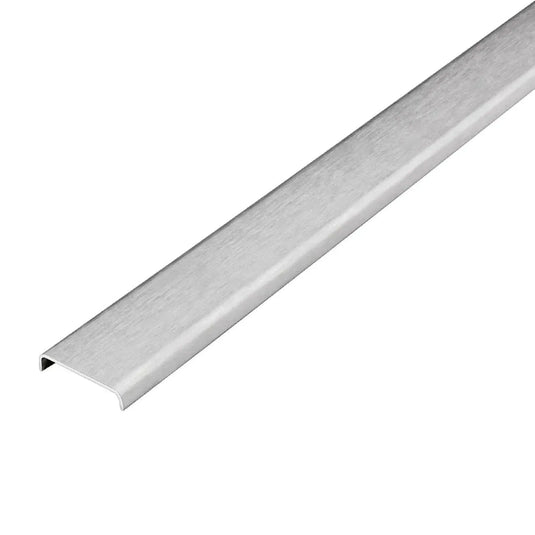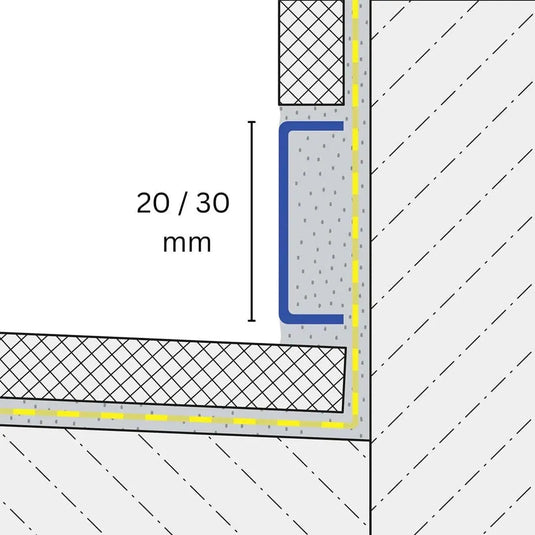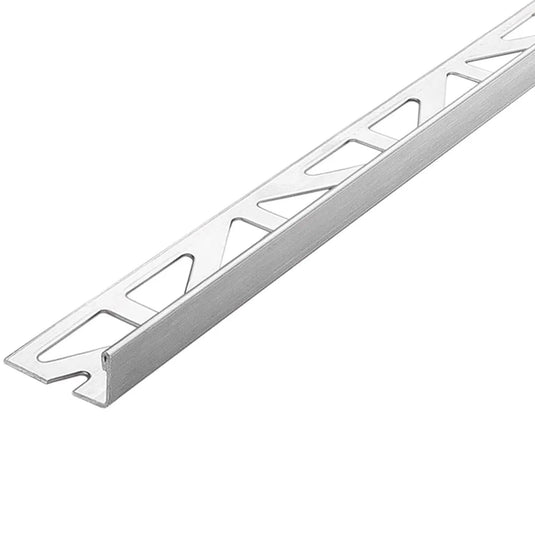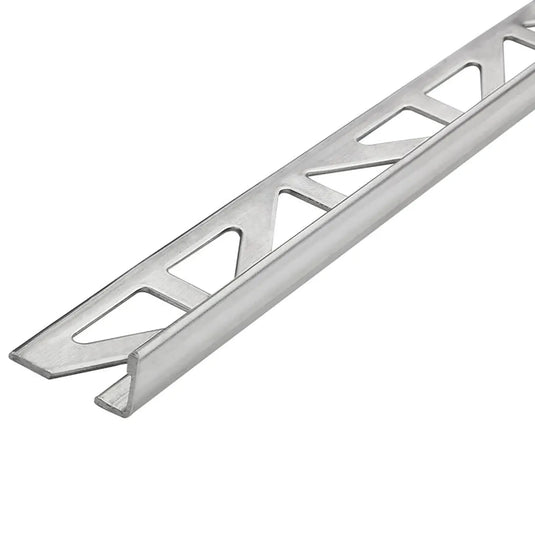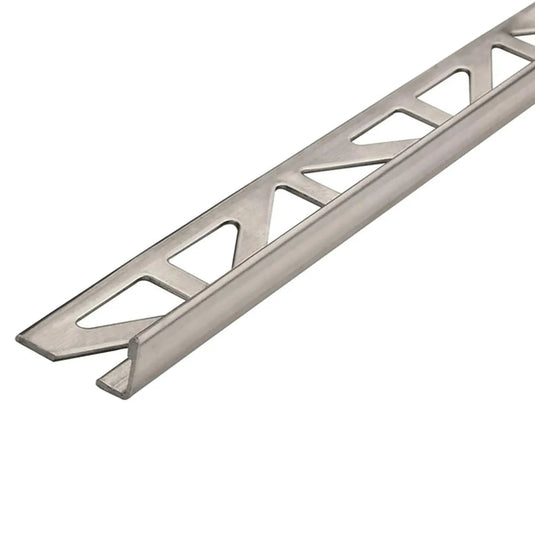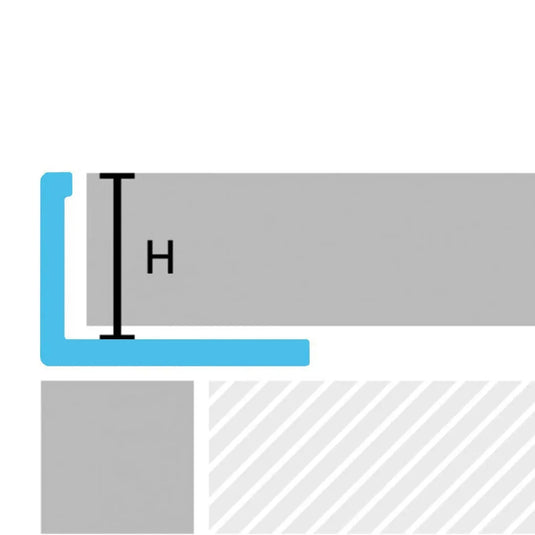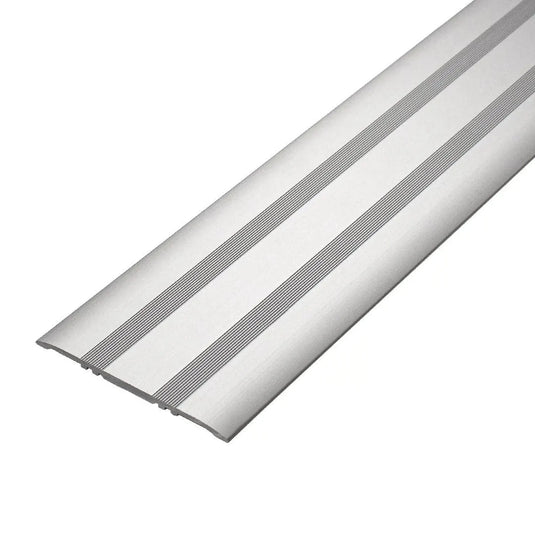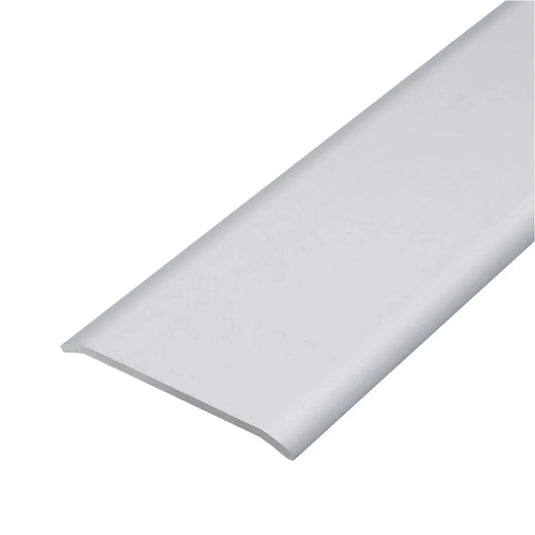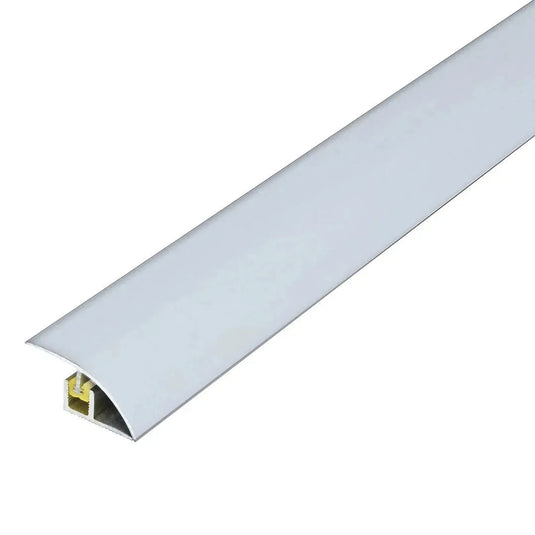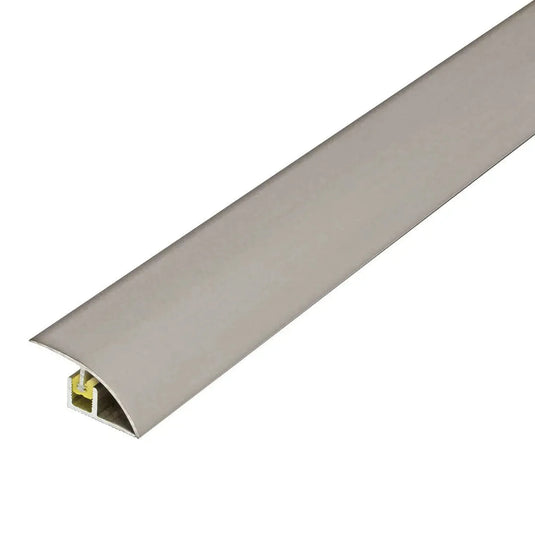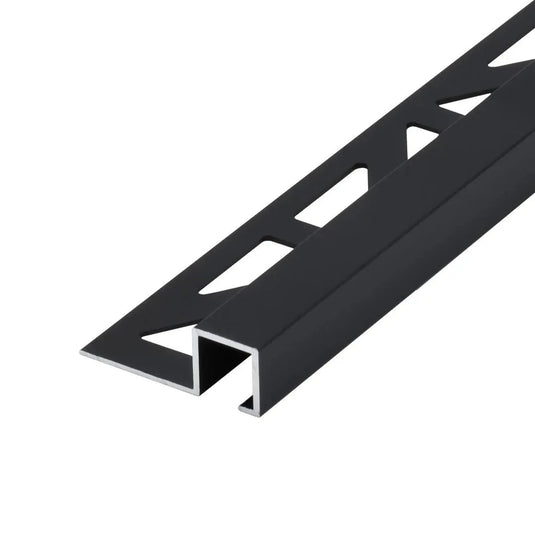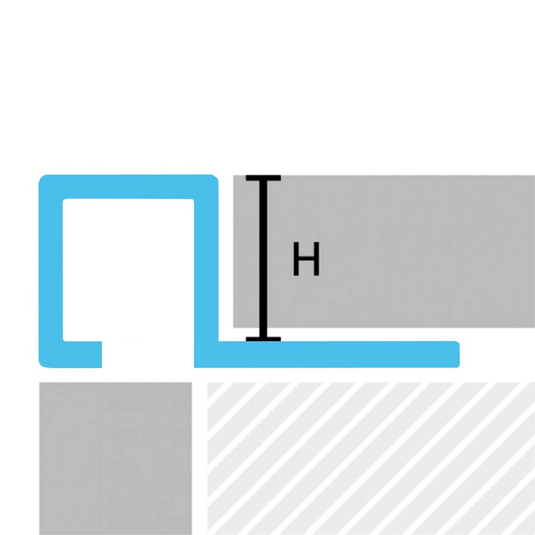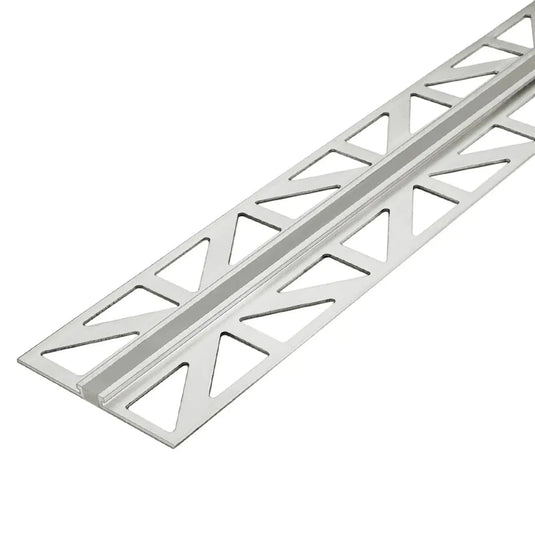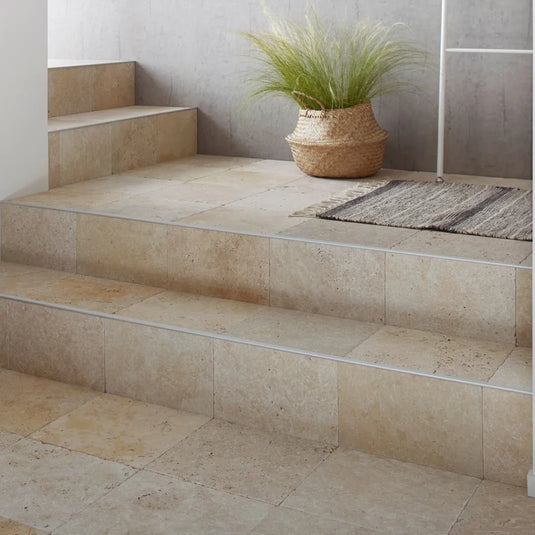Tile rails play a crucial role in the design of tiled surfaces, not only in terms of appearance, but also in terms of functionality and durability. For this reason, tile rails are made from a variety of materials. Various materials are available, including metals such as brass, stainless steel (V2A and V4A) and aluminium, as well as plastic, in particular PVC. Each material has its own advantages and disadvantages. The choice depends on various factors. For this reason, we would like to give you a brief introduction to materials science to make it easier for you to find the right profile for your needs.
Metal tile rails
Metal profiles are particularly popular in modern tiling – they combine stability, durability and a high-quality appearance. Depending on the location and aesthetic requirements, different metals such as stainless steel, aluminium or brass are used. Below, we provide an overview of the properties of these materials.
Stainless steel tile rails
Stainless steel is a versatile choice with different variants, including V2A and V4A. Stainless steel V4A (V4A stainless steel straight edge tile trim) offers the highest corrosion resistance and is therefore ideal for environments with high humidity. Stainless steel V2A (e.g. stainless steel square edge tile trim) is a more economical option for less demanding environments. Both variants offer a modern look and good resistance to environmental influences.
Profiles with natural surfaces
This variant shows stainless steel in its untreated original form – without polishing or grinding. It is ideal for technical applications where appearance is secondary, or for minimalist designs with a rough character.

These profiles were manufactured without additional surface treatment. They are presented in their natural state.
Profiles with brushed surface
Brushed profiles are among the most popular options for interior design. The finely textured surface lends a modern, understated look and effectively conceals minor scratches – ideal for high-traffic areas such as kitchens or bathrooms.

These profiles are characterised by a matt surface. Any water residue is not immediately visible. The finely ground structure is created by a mechanical brushing process.
Profiles with polished surface
Polished stainless steel profiles have a particularly luxurious appearance and are often found in high-quality, prestigious areas. The shiny surface reflects light, emphasises architectural accents and can be combined particularly well with glass or high-gloss tiles.

These shiny profiles attract attention with their reflective surface and are particularly hygienic and easy to clean.
Aluminium tile rails
Aluminium is a lightweight and inexpensive metal that is particularly well suited for projects where weight is a factor. However, it is not as robust as stainless steel and can corrode under certain conditions.
Profiles made from natural aluminium
This aluminium variant is offered untreated and is well suited for DIY projects or applications where individual surface treatment is desired.
Natural aluminium is the most affordable option. It can be painted as desired. You can find the aluminium straight edge tile trim in our shop.
Anodised aluminium profiles
Anodised profiles are particularly resistant to environmental influences and are often used in wet areas. They offer a durable and colour-fast solution for tile edges.
Anodised profiles have a refined surface that is resistant to moisture. Visible surfaces should be cleaned after installation to remove any traces of tile adhesive.
Powder-coated aluminium profiles
These coloured aluminium profiles are particularly decorative and allow for harmonious integration into the room design. The coating also provides additional protection against mechanical influences.
These profiles are available in many colours, are impact-resistant and ideal for colour coordination with the tiles.
Brass tile rails
Brass is a particularly high-quality material that stands out thanks to its elegant appearance and enormous strength. It is often used in exclusive residential and commercial areas, such as luxury bathrooms or stylish kitchens. In addition to its visual appeal, brass impresses with its high abrasion resistance and stability against mechanical stress. It retains its shape and function even under heavy use.

Brass impresses with its golden colour and high strength. It is ideal for areas subject to heavy use, such as public buildings. Thanks to its elegant appearance, brass is the perfect choice for exclusive projects. See for yourself, for example, with our brass straight edge tile trim.
Plastic (PVC) tile rails

PVC rails are particularly inexpensive and easy to work with. They are resistant to moisture, but less durable than metal profiles. Ideal for DIY projects and areas subject to low stress.
Our range includes PVC angle, square and quarter circle profiles in many different colours – including matching inner and outer corners.
Which material is right for my project?
The decision on the most suitable material depends on various criteria: budget, environmental conditions, load and weight. V4A stainless steel or brass are suitable for damp rooms, aluminium for lightweight construction and PVC for budget solutions.
Taking these factors into account ensures that the selected tile rails are functional, durable and visually appealing.
Vor- und Nachteile der Fliesenschienen im Vergleich
For your convenience, here is a clear comparison of the different materials and their properties. This will help you choose the right tile rail for your project.

